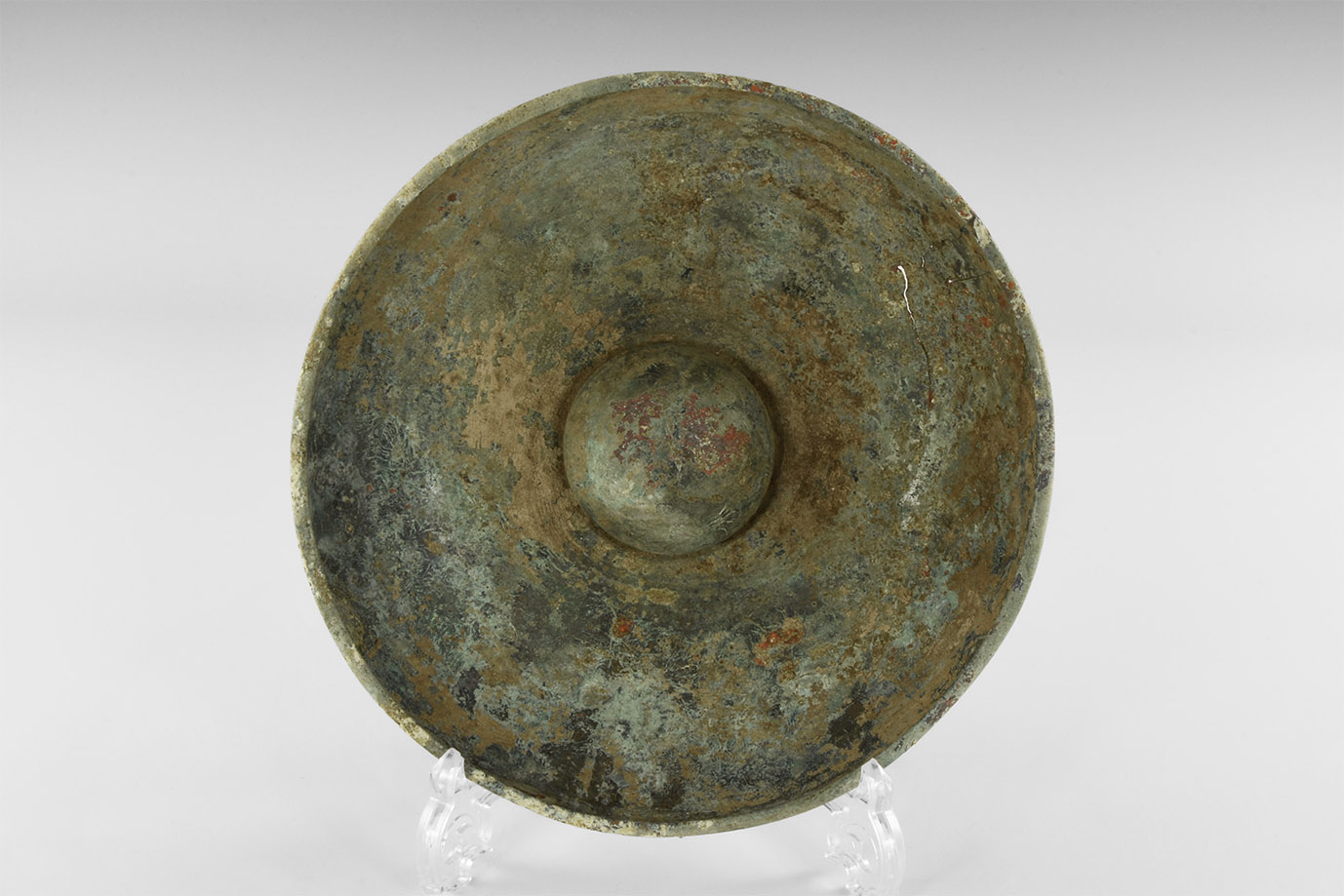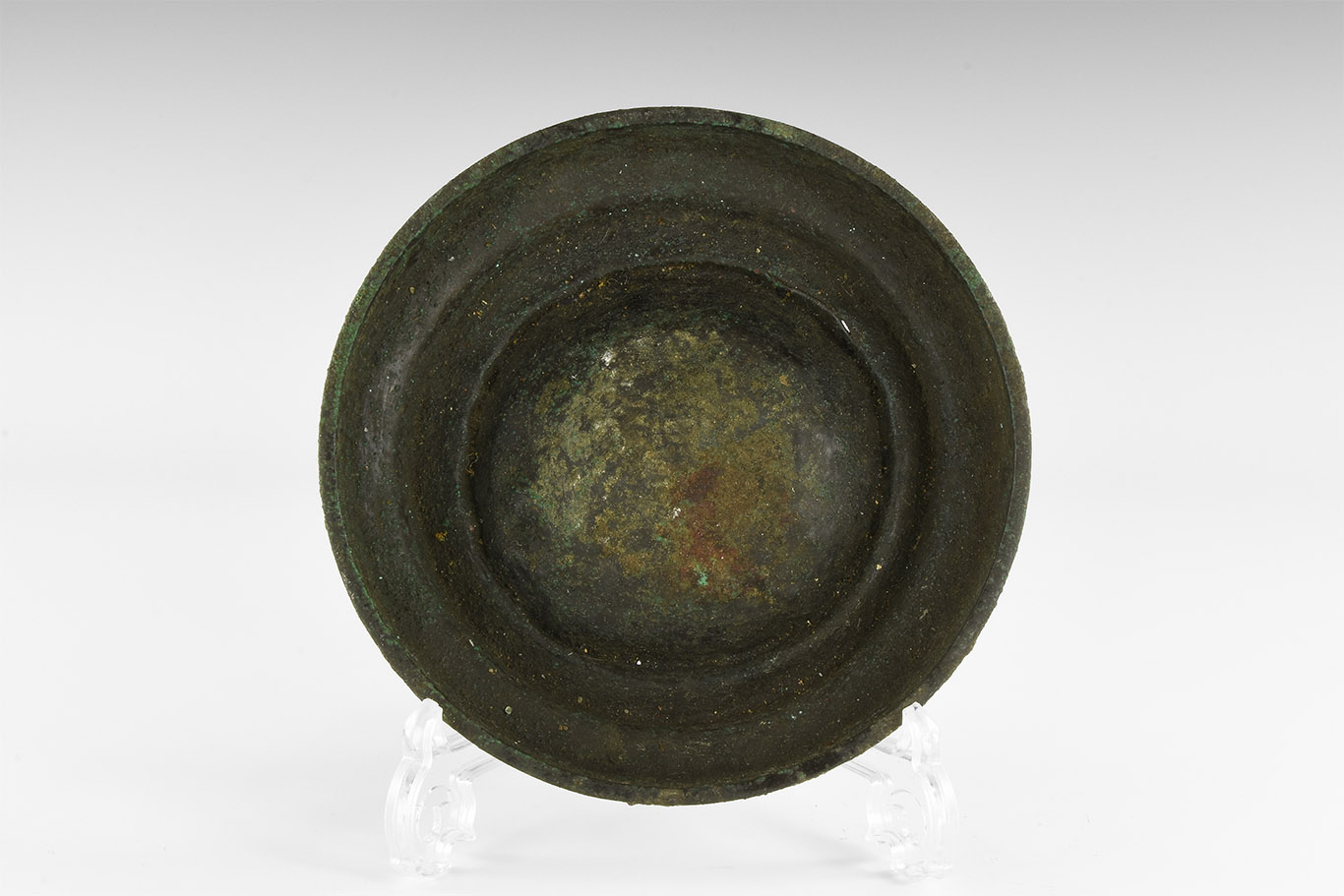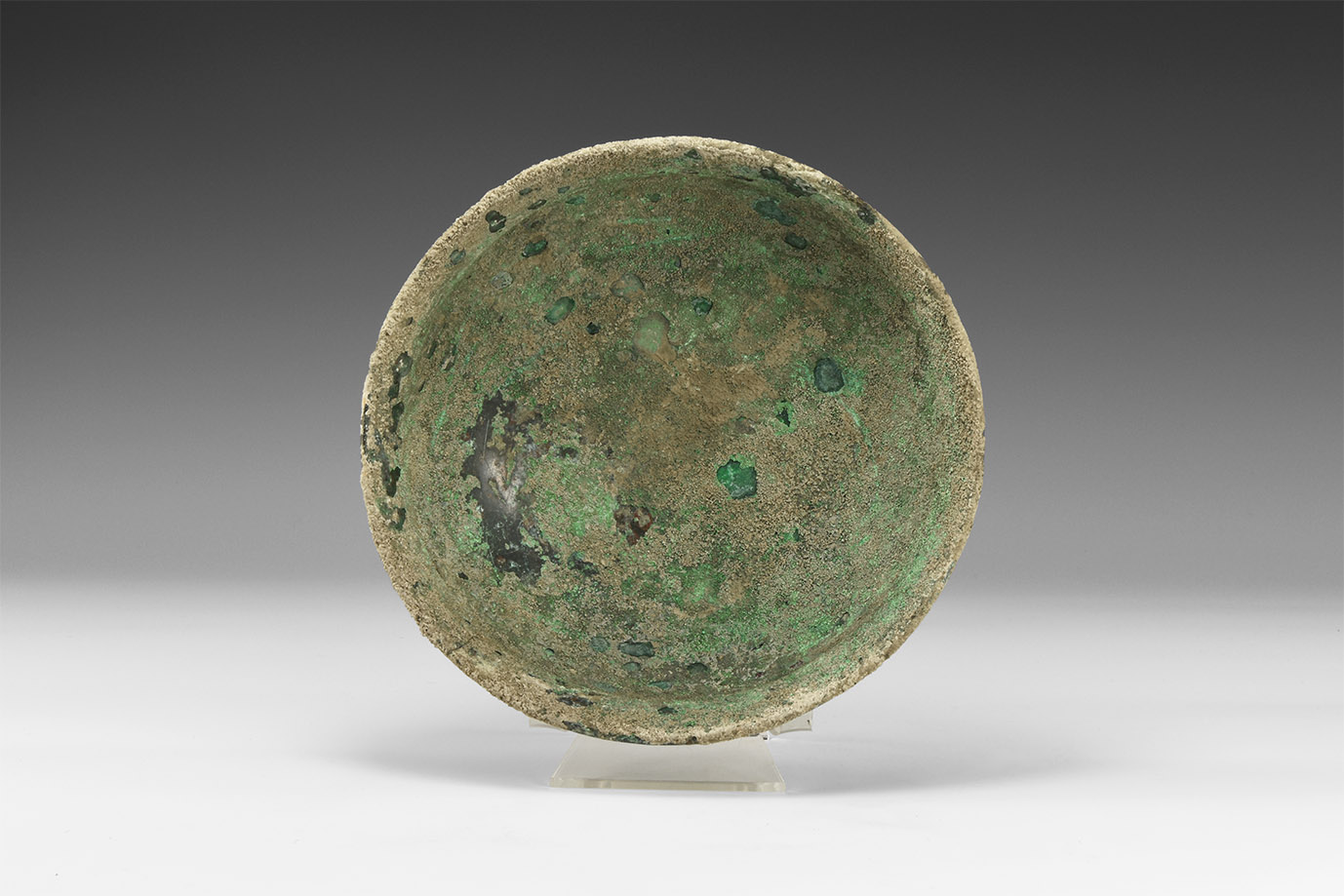BYZANTINE GOLD FRETWORK BRACELET WITH BIRDS AND CHI-RHO 6th century AD A gold hinged bracelet comprising a flat-section hoop with openwork scrolled vegetation, beaded borders; hinged junction with pin; ribbed hinges flanking the discoid cell with beaded rim, inset silver disc overlaid by an openwork panel with christogram within intersecting squares; the christogram and tendrils with pecked detailing, the scrolled tendrils punched pellet detailing to the fruit. 45 grams, 71mm (2 3/4"). Very fine condition, usage wear. Provenance Property of a New York collector; acquired 1980s. Supplied with a positive X-Ray Fluorescence metal analysis certificate. Published Accompanied by an Art Loss Register certificate. Literature See Yeroulanou, A. Important Bracelets in Early Christian and Byzantine Art in Entwistle, C. & Adams, N. Intelligible Beauty, Recent Research into Byzantine Jewellery, London, 2010 for discussion. Footnotes The chi-rho is an ancient Christian symbol that consists of the intersection of the capital Greek letters chi (Χ) and rho (Ρ), which are the first two letters of "Christ" in Greek. The chi-rho can represent either Christ or Christianity and is also known as a Christogram. The chi-rho is also known as the labarum, which is based on the Latin word laureum, "military standard." This is based on Constantine's application of the chi-rho symbol to his military standard after receiving his famous vision before the Battle of the Milvian Bridge in 312 AD. The symbol, along many others such as the fish, was also used by early Christians as a means of identifying each other without drawing the attention of hostile authorities. Its popularity as a symbol under the recognised Christian faith was mostly during the Late Roman period and the early to middle Byzantine periods, until it was eventually superseded by the symbol of the cross itself.
BYZANTINE GOLD FRETWORK BRACELET WITH BIRDS AND CHI-RHO 6th century AD A gold hinged bracelet comprising a flat-section hoop with openwork scrolled vegetation, beaded borders; hinged junction with pin; ribbed hinges flanking the discoid cell with beaded rim, inset silver disc overlaid by an openwork panel with christogram within intersecting squares; the christogram and tendrils with pecked detailing, the scrolled tendrils punched pellet detailing to the fruit. 45 grams, 71mm (2 3/4"). Very fine condition, usage wear. Provenance Property of a New York collector; acquired 1980s. Supplied with a positive X-Ray Fluorescence metal analysis certificate. Published Accompanied by an Art Loss Register certificate. Literature See Yeroulanou, A. Important Bracelets in Early Christian and Byzantine Art in Entwistle, C. & Adams, N. Intelligible Beauty, Recent Research into Byzantine Jewellery, London, 2010 for discussion. Footnotes The chi-rho is an ancient Christian symbol that consists of the intersection of the capital Greek letters chi (Χ) and rho (Ρ), which are the first two letters of "Christ" in Greek. The chi-rho can represent either Christ or Christianity and is also known as a Christogram. The chi-rho is also known as the labarum, which is based on the Latin word laureum, "military standard." This is based on Constantine's application of the chi-rho symbol to his military standard after receiving his famous vision before the Battle of the Milvian Bridge in 312 AD. The symbol, along many others such as the fish, was also used by early Christians as a means of identifying each other without drawing the attention of hostile authorities. Its popularity as a symbol under the recognised Christian faith was mostly during the Late Roman period and the early to middle Byzantine periods, until it was eventually superseded by the symbol of the cross itself.








.jpg)






Testen Sie LotSearch und seine Premium-Features 7 Tage - ohne Kosten!
Lassen Sie sich automatisch über neue Objekte in kommenden Auktionen benachrichtigen.
Suchauftrag anlegen